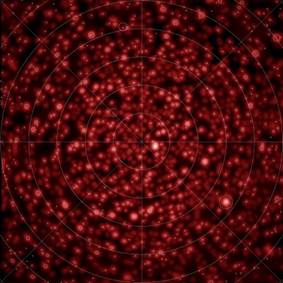Ulastai 21 CentiMeter Array
The 21 CentiMeter Array (21CMA), sited in Tianshan Mountains, west China, is a ground based meter-wave interferometric array designed to probe the 21cm radiation of neutral hydrogen from the cosmic dawn and the epoch of reionization at z=6-27. The array, constructed from August 2005 to July 2006 and upgraded by July 2010, consists of 81 pods with 127 log-period antennas for each, which are deployed along two perpendicular arms of 6+4 km in length. A field of 10-100 square degrees centered on the North Celestial Pole is imaged 24 hours per day in a low frequency range from 50 MHz to 200 MHz with a resolution of 24 kHz. Coherent uv data at each frequency channel are being accumulated to meet the desired sensitivity of statistical detection of the cosmic 21cm signal, and advanced RFI and foreground removal techniques have been correspondingly developed. 21CMA is a unique low-frequency radio interferometer that serves as SKA pathfinder in China.
The lower panel shows a sky map of 10°x 10° centered on the North Celestial Pole observed with 21CMA, that spans an annulus of 1 degree in distance. Small rings superposed on point sources are known radio sources in the 6C catalog, and their sizes are proportional to their fluxes at 151 MHz. Two of the brightest sources are 3C061.1 and NVSS J011732. Integration time is 24 hours and only one pod pair E01E20 with a baseline of 1280 m was used to make this image.

The 21 CentiMeter Array (21CMA)
